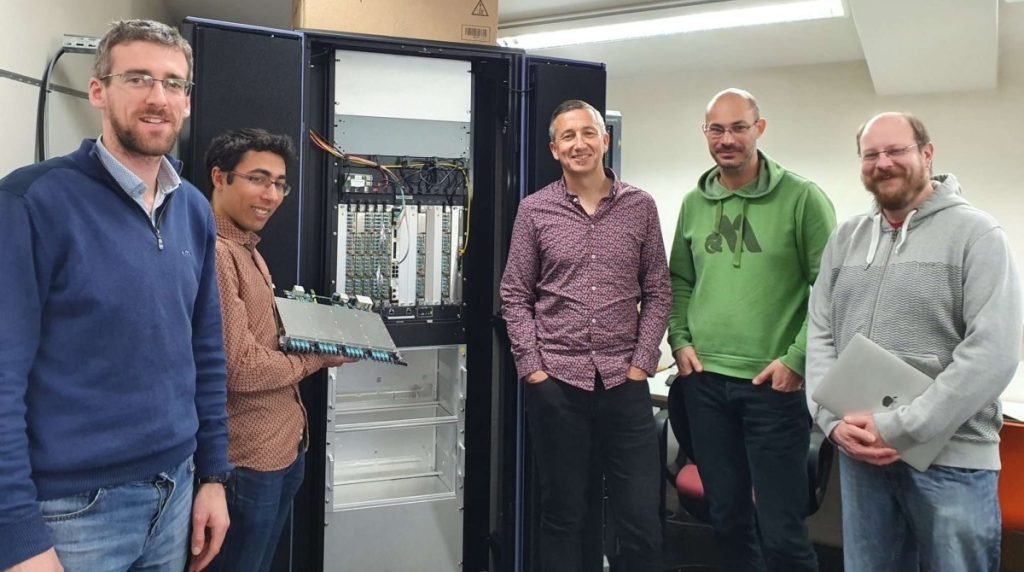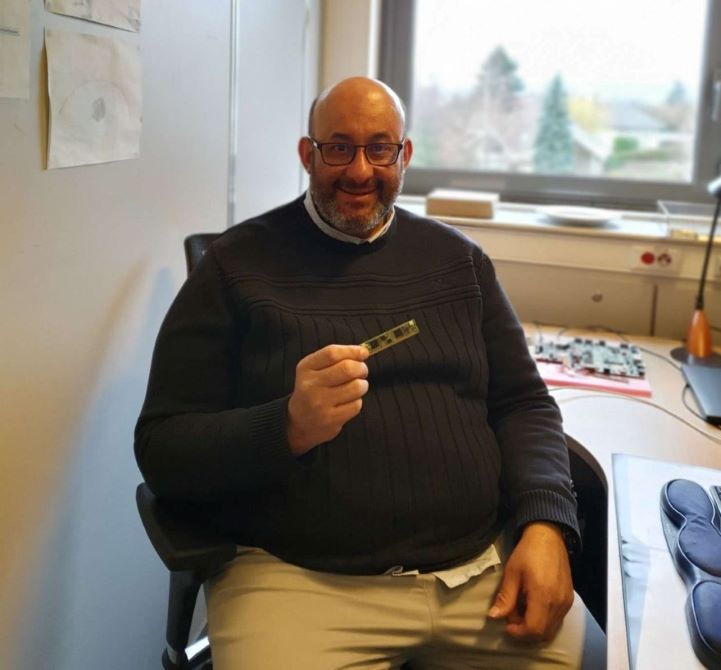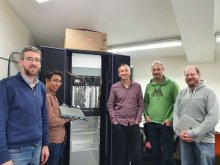ATLAS with a taste of Savoy
The third LHC data-taking period, called Run 3, will start in 2021. ATLAS detector is currently undergoing maintenance and improvement work, in particular to select even better the electrons and photons emitted in a wide variety of the processes studied at the LHC.
Up to now, the very fine-grained information produced by the ATLAS electromagnetic calorimeter was grouped in “trigger towers” to limit the number and hence cost of trigger channels. Advances in electronics and the use of optical fibres now allow the transmission of a much larger amount of information at a reasonable cost, and the “super-cells” to be used in Run 3 will increase the number of trigger channels ten-fold.
Since 2012, the ATLAS LAPP team has developed a part of the electronics responsible for managing this very high data volume of about 25Tb/s. These cards – called “LATOME” after famous savoyard cheese, tome des Bauges – calculate energy and time of the signals received in the “super-cells” and send this information to the trigger system to make the final decision. In 2019, 150 boards were produced and tested in the laboratory. They are currently being installed in the ATCA crates in the electronics room, 100 meters below the ground, next to the ATLAS detector.
LAPP also developed the IPCM card which allows to control the boards in the ATCA crate (including LATOMEs) and which are used by many ATLAS detector sub-systems.


The completion of this project is one more step in the laboratory long-term work on the ATLAS electromagnetic calorimeter. It will have an important impact on the physics studied at LAPP, including searches for new phenomena beyond Standard Model in the final states of two photons or two electrons; precise studies of the Higgs boson decays, or the measurements of the diboson and dielectron production at the LHC.

The development of the LATOME cards was also supported by University Savoie Mont-Blanc in the context of the Appel à Projets Recherche 2014-2017.
More information:
- responsibities of the LAPP electronics department in the LHC R&D
- “Phase-I Trigger Readout Electronics Upgrade for the ATLAS Liquid-Argon Calorimeters”, talk by Nicolas Chevillot (LAPP) à 20th Real Time Conference (2016).
- Performance of electron and photon triggers in ATLAS during LHC Run 2
Contacts: Thibault Guillemin thibault.guillemin@lapp.in2p3.fr Tetiana Berger-Hrynova hrynova@lapp.in2p3.fr


